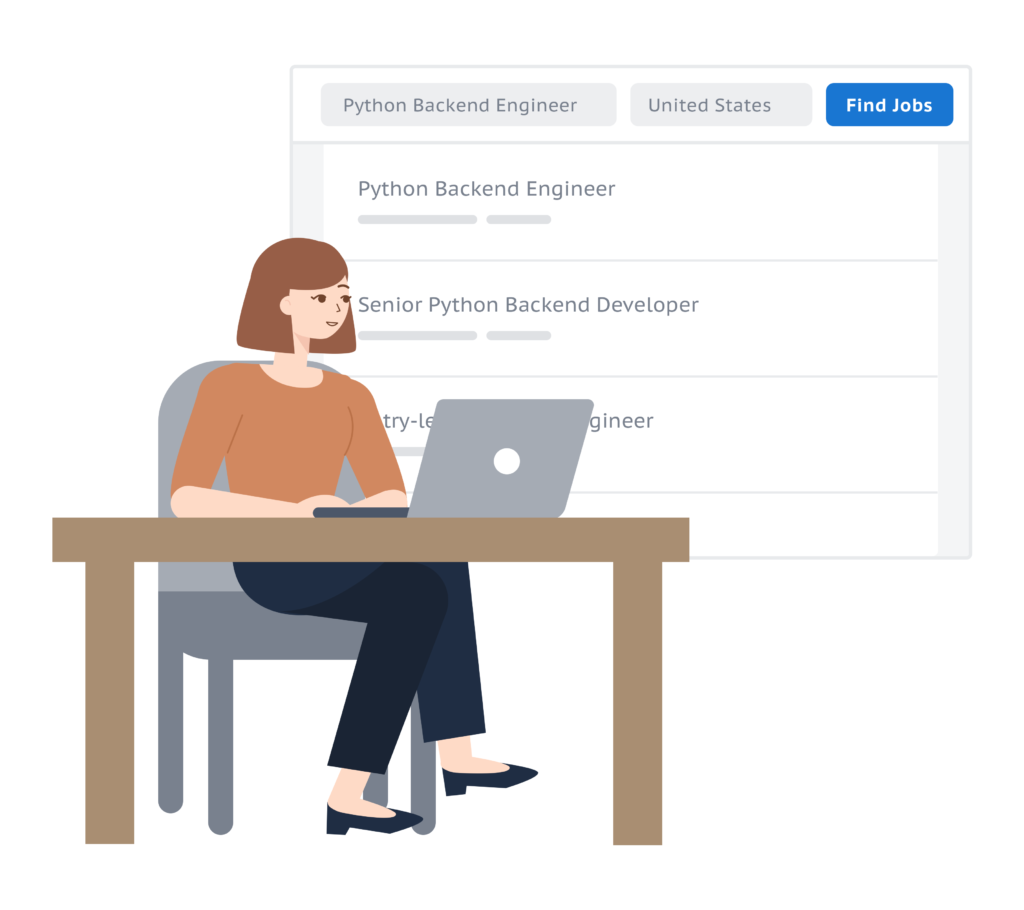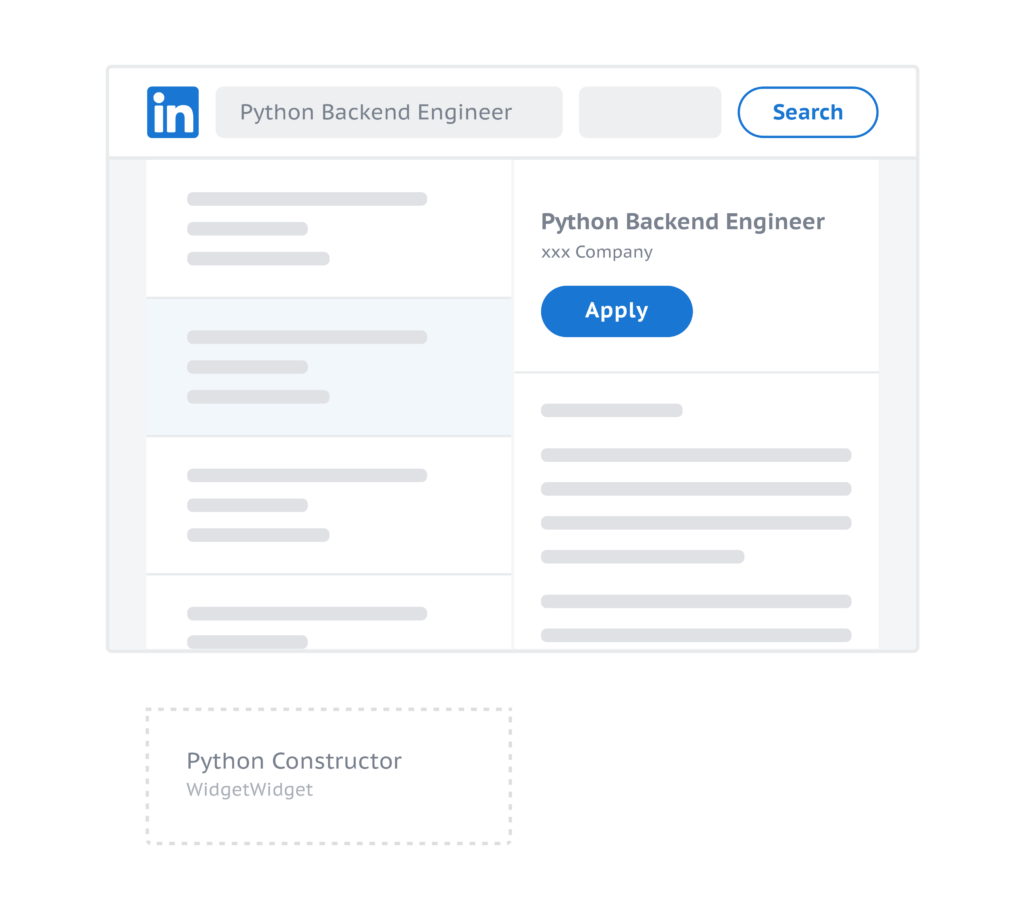The title you use on a job posting can seem like nothing more than a layer of icing on top of a cake. But, actually, a job post title is more like one of the cake’s layers, perhaps even the base. In short, it’s a lot more important than it seems.
We get a lot of questions from customers about this. Hiring teams wonder why they can’t use the same titles externally as they use internally. Or why they can’t use one of the trendy titles floating around on job boards these days (e.g., anything with ‘Jedi’ in it).
For an answer, here’s a step-by-step look at a fictional (and purposefully hyperbolic) job search process that, while totally made up, relies on real-world job titles and data analysis.
A job seeker begins her search
Let’s say there’s a highly qualified software engineer out there ─ Cassie ─ who’s looking for a new gig. Cassie knows how to leverage her network on LinkedIn and various engineering associations for referrals. And she gets regular emails from recruiters doing targeted outreach. But her primary resource, as with most job seekers, is online job boards.
After Cassie updates her resume, she starts her online search. She uses more generalized job boards like Indeed and LinkedIn. But she also targets more tech-specific boards like Stack Overflow and (naturally, as a Python engineer) Python’s job board.

First, Cassie types ‘engineer’ into a job board’s search box. Loads of jobs pop up, for all types of engineers, from civil engineers to aerospace engineers to electrical engineers. She immediately realizes that her search term is too broad. She refines it a little by adding ‘software’ in front of ‘engineer.’ Still, way too many jobs come up. (It’s been a few years since she’s done this.)
Next, Cassie types in ‘backend software engineer.’ The list is a little more specific this time, but it’s still too broad. Finally, she types in ‘Python backend engineer.’ This time she gets a more manageable list, which she begins to scan through.
A company writes its job ad
While Cassie is busy updating her resume, hiring teams at various companies are busy writing job ads for software engineers. One (fictional) company, widget maker WidgetWidget, is looking for a backend software engineer proficient in the Python programming language.
It’s a perfect fit for Cassie. WidgetWidget is a great employer who really cares about employees. The backend engineering team would absolutely love working with her, and the work she’d be doing is right in her wheelhouse. (Although, of course, neither WidgetWidget nor Cassie know any of this at the time.)
The WidgetWidget hiring team works hard to put together a job description that paints an accurate picture of the job. They include everything Cassie wants to know about the position, company, engineering team, work environment ─ the works. The ad is well-written and inclusive, with clear requirements. As soon as Cassie reads it, she’ll realize that WidgetWidget is a place where she’ll feel comfortable and thrive. (If she reads it, that is.)
Enter the job post title

WidgetWidget is in the process of overhauling its job titles in an effort to seem edgier and more fun. (Who can blame them?) They also want to use the same title externally as they do internally, for consistency. (Again, who can blame them?) So the title the hiring team lands on for their backend engineer is…Python Constructor.
It’s a play on words. Instead of python constrictor, it’s python constructor, someone who builds the structure of software applications using Python. And setting aside the fact that pythons and boa constrictors are actually two different kind of snakes, the WidgetWidget engineering team warms to the title. In fact, Cassie will warm to the title too if she ever reads the job posting.

But she doesn’t ever read it. The title confuses both the online job boards and her alike. First, it shows up pages down in the search, lumped in with ads for unrelated jobs. Second, Cassie glosses right over it because the title doesn’t mean anything to her.
Despite all the hard work, Cassie never reads the job posting that the WidgetWidget hiring team has done such a wonderful job on. She never applies and never meets the engineering team that she would have liked so much.
In time, Cassie lands a job with a company she likes well enough, although not as much as she would have liked WidgetWidget. And WidgetWidget eventually finds a Python backend engineer, although not one as talented as Cassie.
A job post title is a layer, not the icing
Now, WidgetWidget landed on a fairly unrealistic title in our fictional example. But it’s important to know that common, seemingly innocuous titling mistakes can be just as problematic. Think numeric levels (e.g., Programmer II), abbreviations or acronyms (e.g., VP or Sr.), or internal data (e.g., job ID number or company sub-brand). These and other mistakes can keep your job from appearing in searches on job boards.
The moral of the story? A job post title is more important and more technical than it first appears. It’s not just the icing on the cake, it’s one of the layers. By all means, use whatever title you want internally. But when you advertise for an open position, use a different title. Use one that you already know is industry-standard, optimized for search engines, and specific enough to accurately represent the job. So great job seekers like Cassie can find it and understand it.
